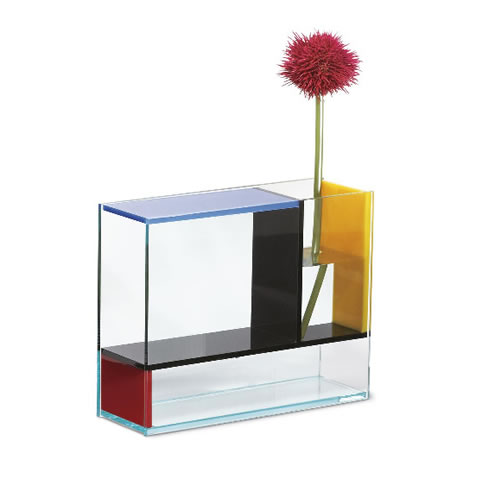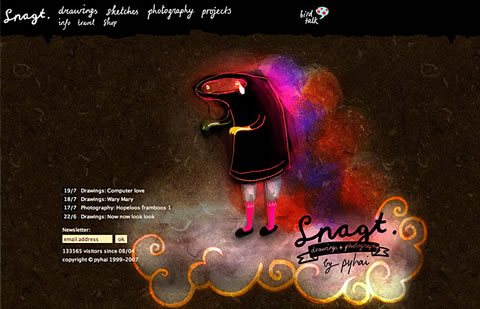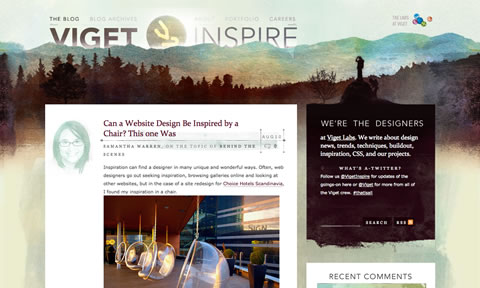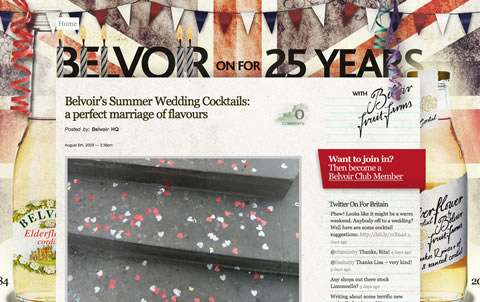If Famous Graphic Artists Were Web Designers…
Even though many current styles and trends can be connected to recent design pieces, they do not originate there. So much modern design originated before computers and the Web were even a glimmer in the eye of their creators.
Looking back and drawing inspiration from very early graphic and print design is a current trend nowadays, but that is not the beginning of the story. As you go further back, you’ll find groundbreaking design decades, even a century, ago. In this article we’ll explore inspirational paintings and artists who have influenced modern design. In reading this article, you will see some true evolution in design.

Where Art Meets Design
The term “graphic design” was coined in 1922 by one of the first modern designers, William Addison Dwiggins. He described himself as, “[an] individual who brings structural order and visual form to printed communications.” This seems to be where art meets design. Design is for communicating and achieving a specific goal. Today, the goal is often to market and sell products or services through design, whether by packaging a product, building a brand or creating a Web experience.

So, is design today merely art created for the express purpose of generating profit? One could argue that great artists in history created their own art for profit. Michelangelo’s Scenes from Genesis on the Sistine Chapel and Leonardo da Vinci’s great work The Last Supper were both commissioned by the church. Today, we regard their work as innovative and embodiments of the Renaissance, but we forget they were also created for profit.
We like to think of great artists as purely motivated individuals who are driven to express themselves or transform our perception of the world. Colors, textures and composition are part of their process of self-discovery and reflect the aesthetics of the time. Modern designers are no different. Even though a particular design may be intended to communicate the message of a corporation, it still reflects the world around us, and the designer has left their mark on it.
Art History Found Today
The best art in history was unprecedented and transcended its time. It sometimes seems as if the artists were conscious of future generations enjoying their work. Their compositions, colors, and styles don’t just hang on gallery walls today. They are all around us, in everything from shoes to album covers.
Piet Mondriaan
Piet Mondriaan, Composition with Red, Yellow, and Blue, 1927
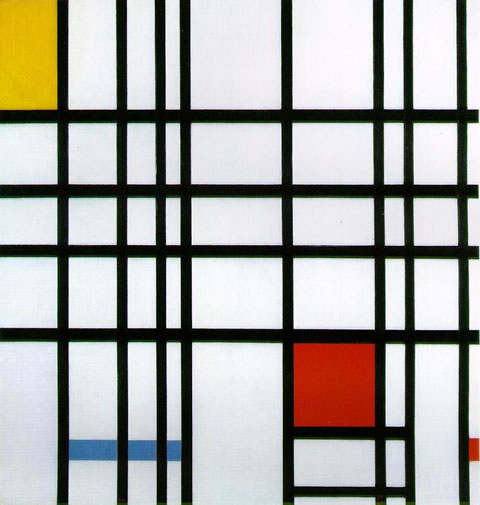
Mondriaan’s influence seen today: Chiasso Windows Vase
Andy Warhol
Andy Warhol, Orange Car Crash Fourteen Times, 1963

Warhol’s influence seen today: Soho Brewery Packaging

Yves Klein
Yves Klein, IKB 191, 1962
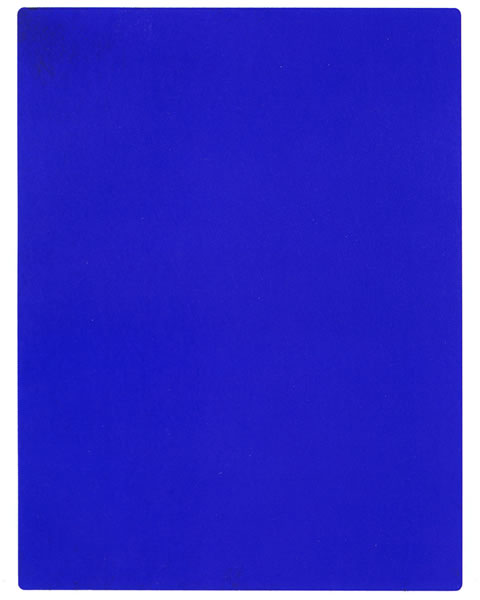
Klein’s influence seen today: Chanel Purse in “Klein Bleu”
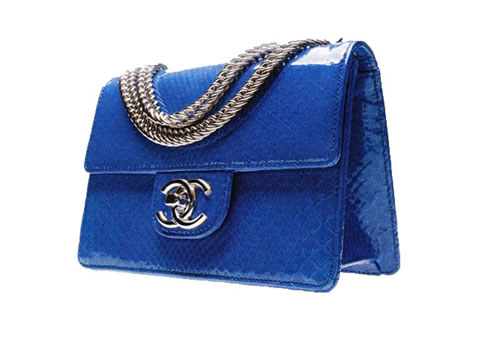
Robert Irwan
Robert Irwin, Untitled, 1968

Irwin’s influence seen today: ISST Organic Ice Tea Packaging
Andy Warhol
Andy Warhol, Banana, 1966
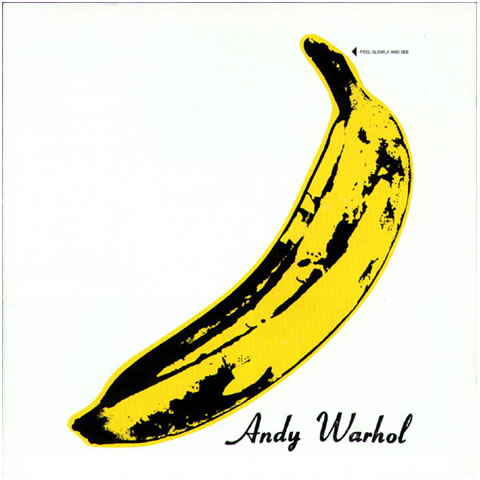
Warhol’s influence seen today: Royal Elastics’ Andy Warhol Shoes
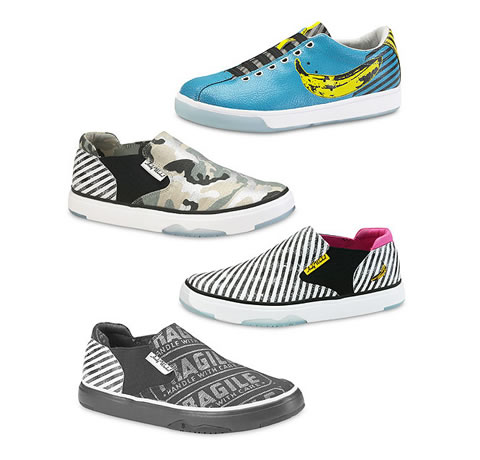
Frank Stella
Frank Stella, The Marriage of Reason and Squalor, II, 1959

Stella’s influence seen today: ASKUL Branding

Yayoi Kusama
Yayoi Kusama, Infinity Dots H.R.T, 2001

Kusama’s influence seen today: The Killers Album Art
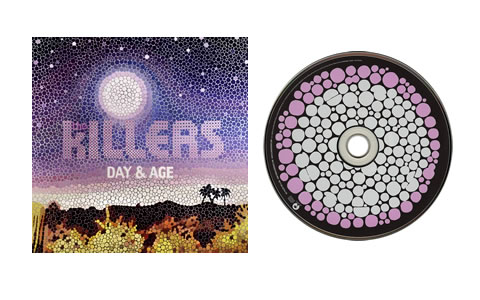
If Famous Painters Were Web Designers
What if these great masters were alive today? What if they were using a mouse instead of a brush, RGB instead of mixed oils and a computer screen instead of linen canvas. If these famous artists were alive now, these are the websites they might have designed.
Yves Klein
Yves Klein, IKB 191, 1962

A website Klein might have designed: Britain Rocks
Andy Warhol
Andy Warhol, Knives, 1981-82
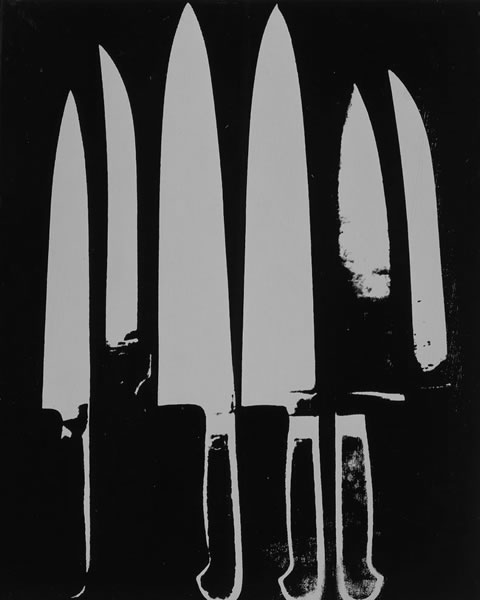
A website Warhol might have designed: Carsonified
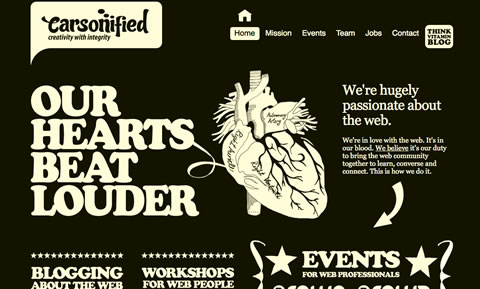
David Alfaro Siqueiros
David Alfaro Siqueiros, Collective Suicide, 1936

A website Siqueiros might have designed: Snagt
Lyubov Popova
Lyubov Popova, Painterly Architectonic, 1917

A website Popova might have designed: Douglas Menezes
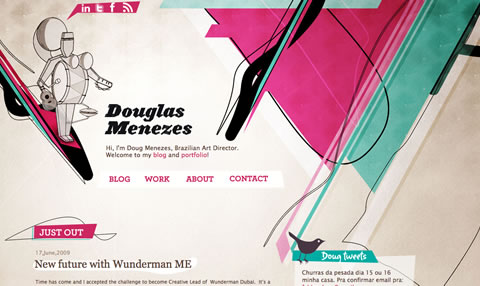
Claude Monet
Claude Monet, Impression, Sunrise, 1872

A website Monet might have designed: Viget Inspire
Henri Matisse
Henri Matisse, La Gerbe, 1953
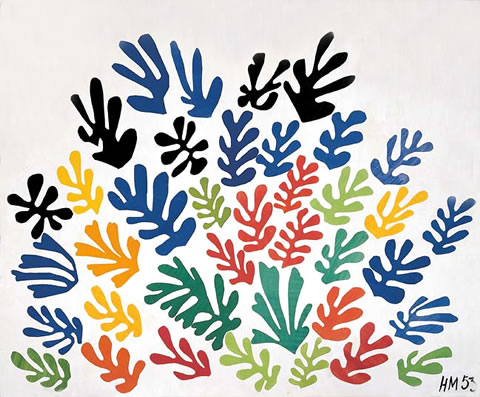
A website Matisse might have designed: Devia
Paul Klee
Paul Klee, Fish Magic, 1925
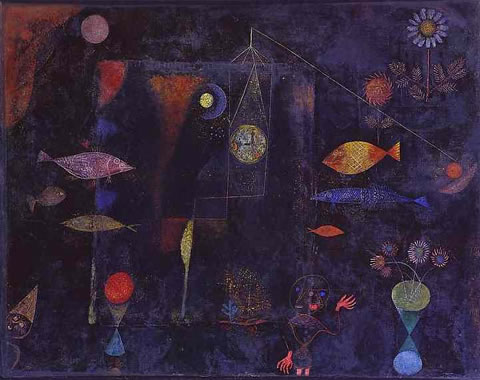
A website Klee might have designed: Ali Felski

Basquiat
Basquiat, Pegasus, 1987
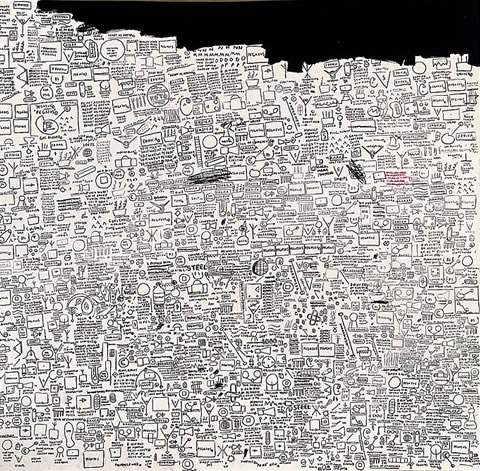
A website Basquiat might have designed: Orange Label
Joan Mitchell
Joan Mitchell, Untitled, 1960

A website Mitchell might have designed: Siete De Febrero
Georges Braque
Georges Braque, Fruit Dish, 1908-09
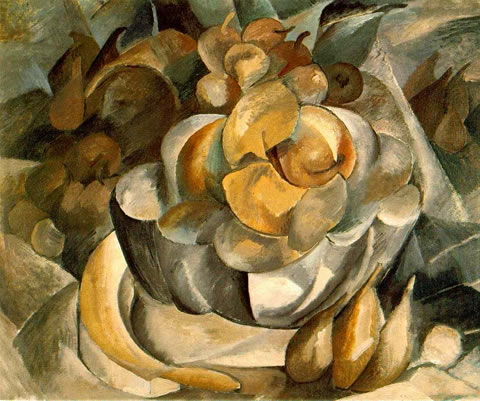
A website Braque might have designed: Belvoir Fruit Farms
Hans Hoffmann
Hans Hoffmann, Bald Eagle, 1950
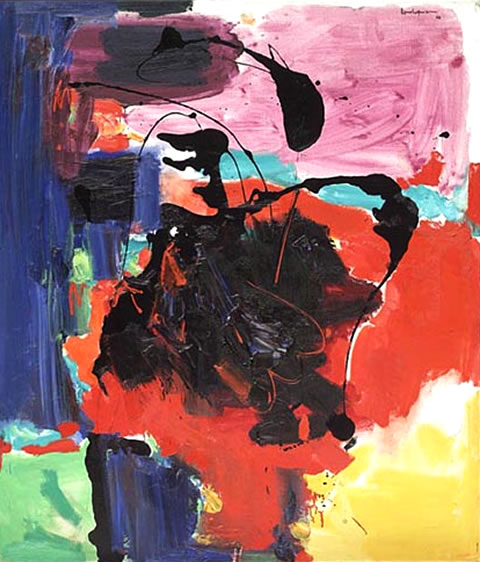
A website Hoffmann might have designed: Funny Garbage
Basquiat
Basquiat, Beat Bop, 1983

A website Basquiat might have designed: Starbucks Coffee At Home

A Closer Look At Six Great Artists
If asked to name a few great artists, someone might first think of Pablo Picasso and Andy Warhol. Many other great artists, though, have shown their influence on modern design. Below are six artists who are unique, innovative and ahead of their time.
Piet Mondriaan
Piet Mondriaan (1872-1944) was a Dutch artist known for clean, grid-style paintings. His later compositions, which may initially look simple, took him months to paint. Each element, from the rectangles to the lines, are composed with precision, with careful attention paid to thickness and width. Mondriaan’s work has influenced the design of modern architecture, print layouts, linoleum and, of course, the minimalist style in modern design.
Rhythm of Black Lines, 1935-42

Broadway Boogie Woogie, 1942-43

Basquiat
Jean-Michel Basquiat (1960-1988) was an American artist known for graffiti-influenced and early grunge-style paintings. He started out as a graffiti artist in New York City and later sold postcards and the like along with his artwork on the streets. His painting career took off, and he became known for his use of text and images from popular culture, as well as painting on found objects. Basquiat has been credited with bringing the African-American and Latino experience to the art world.
Self-Portrait, 1982
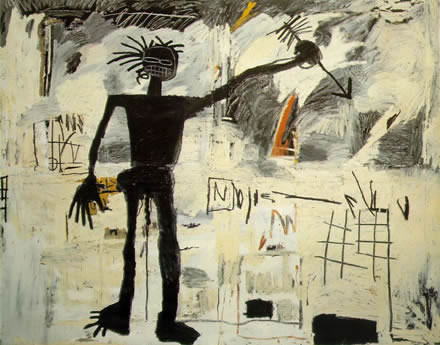
Per Capita, 1983
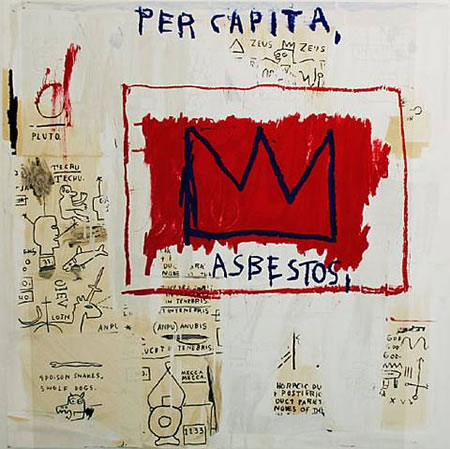
Yves Klein
Yves Klein (1928-1962) was a French artist known for his minimalist monochromatic paintings, featuring his signature deep blue. He worked with blue extensively in his early career and, in 1958, began to use it as a dominant element, making the color itself the art.
International Klein Blue (IKB) is the deep blue hue first mixed by Yves Klein. It is outside the color gamut of computer displays, so it cannot be shown accurately in digital format.
La Vague, 1957
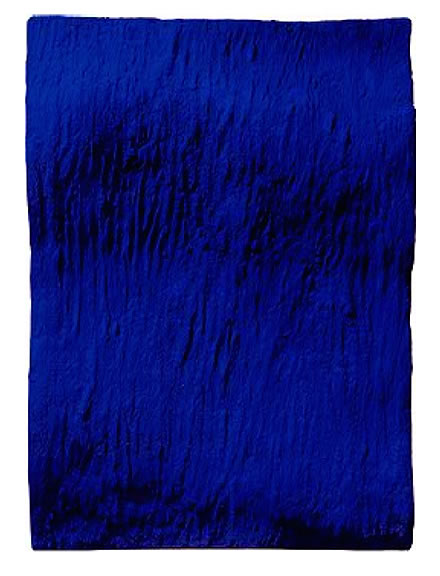
Joan Miró
Joan Miró (1893-1983) was a Spanish artist known for an abstract, collage-style of painting. He famously declared, “I want to assassinate painting.” Miró wanted to upset the traditional and popular styles of art. He was against art for the sake of propaganda or to give the wealthy a cultural identity. Miró tried not to associate himself with any specific art styles or movements. His bold compositions and fresh thinking have influenced many great modern designers.
Hand Catching a Bird, 1926
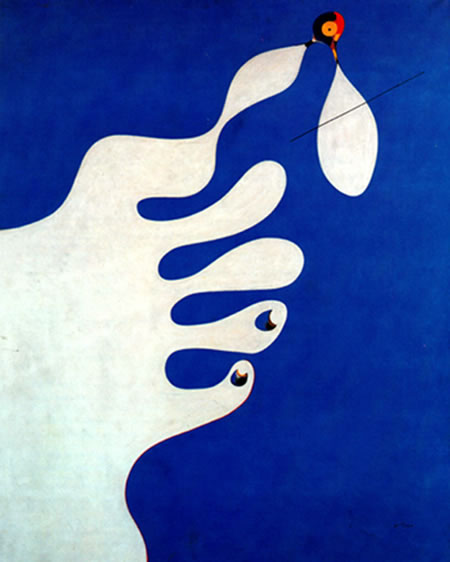
L’Oro dell’Azzurro, 1935

El Lissitzky
Lazar Markovich Lissitzky (1890-1941) was a Russian artist known for his geometric and early graphic-design style. He was a versatile artist who worked in close to a dozen fields, from painting to architectural design. He influenced the Bauhaus and De Stijl (Mondriaan) movements. His artwork and production techniques heavily influence commercial art and modern design today.
Beat the White with the Red Wedge, 1919
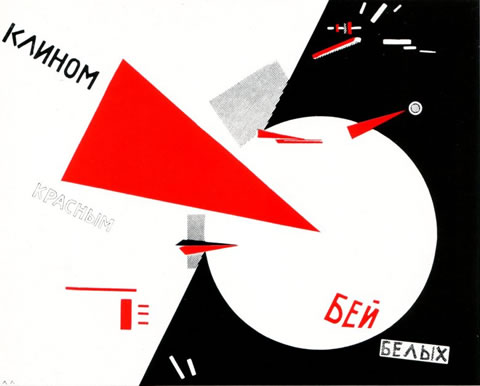
Self-Portrait, 1914
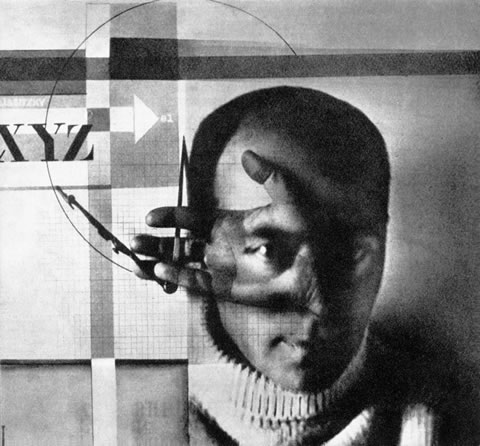
Gustav Klimt
Gustav Klimt (1862-1918) was an Austrian artist known for his decorative paintings that make heavy use of gold and provocative symbolism. He is one of the founders of the Vienna Art Nouveau (Vienna Secession) movement. He is known for his “Golden Phase,” which is characterized by gold leaves and influences ranging from Byzantine to Egyptian. His compositions have symbolic elements that represent such psychological ideas as the “femme fatal.”
The Kiss, 1907
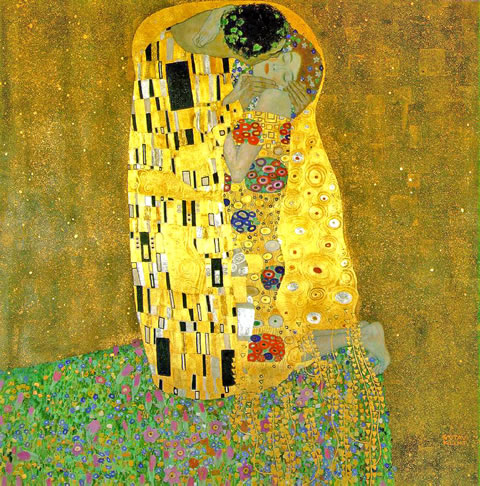
The Tree of Life, 1909
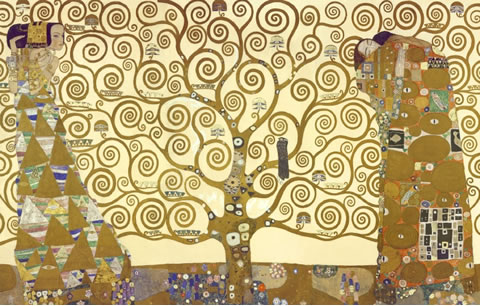
Stepping Back To Move Forward
Inspiration and examples of well-executed designs fill up galleries, blogs and online sources like Flickr. Leading industry magazines such as HOW and Communication Arts show the best of what modern design offers. Many of us look to these sources for ideas and to find the spark for our next masterpiece.
But many designers do not bother looking to works of art from earlier in history. By stepping back in time and walking through an art museum or reading the bio and studying the works of an artist from the past, we can find new ways to approach today’s design challenges.
Resources and Related Posts
You may also be interested in the following related posts:





 Flexible CMS. Headless & API 1st
Flexible CMS. Headless & API 1st
